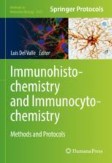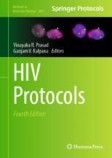Search
Search Results
-
Staining Properties of Selected Commercial Fluorescent Dyes Toward B- and Z-DNA
The properties of six commonly used, commercially available, fluorescent dyes were compared in staining right-handed B-DNA and left-handed Z-DNA. All...

-
Techniques in Staining of Rodent and Human Olfactory Tissue
Staining of olfactory tissue allows for evaluation of the organization of specific cell types within the specimen and allows for assessment in...
-
Quantitative Assessment of Fluorescent Reporter Expression in 3D Retinal Organoids
Stem-cell-derived organoids continue to revolutionize basic and translational research due to the ability of organoids to recapitulate, in a 3D in...
-
Immunofluorescence Staining on Cryosections with High Autofluorescence in African Killifish
The African killifish Nothobranchius furzeri has been considered as an attractive model for exploring biological questions related to regeneration,...
-
Staining Hypoxic Areas of Frozen and FFPE Tissue Sections with Hypoxyprobe™
Hypoxia occurs due to inadequate levels of oxygen in tissue and has been implicated in numerous diseases such as cancer, diabetes, cardiovascular,...
-
A Combined Immunofluorescence and Fluorescent Viability Cocktail Staining Procedure for Rapid Microscopic Detection and Enumeration of Live Legionella pneumophila
This report describes a combined immunofluorescence and fluorescence viability stain applied as one staining solution for rapid detection of live Legio...

-
PCNA Staining of Retinal Cryosections to Assess Microglial/Macrophage Proliferation
Detection of the protein PCNA (proliferating cell nuclear antigen) is used to identify cells in the S phase of the cell cycle to indicate cellular...
-
Double Labeling Fluorescent Immunocytochemistry
Fluorescent immunocytochemistry is a powerful technique based on detecting antigens. It leads to discoveries in cell composition and structure as...
-
Immunofluorescent Staining of Human Hepatic Multicellular Spheroids: A Model for Studying Liver Diseases
In vitro studies on liver diseases, such as non-alcoholic fatty liver disease, fibrosis, and hepatocellular carcinoma, are traditionally performed in...
-
Let it glow: genetically encoded fluorescent reporters in Plasmodium
The use of fluorescent proteins (FPs) in Plasmodium parasites has been key to understand the biology of this obligate intracellular protozoon. FPs...

-
Standard Microbiological Techniques (Staining, Morphological and Cultural Characteristics, Biochemical Properties, and Seroty**) in the Detection of ESKAPE Pathogens
ESKAPE pathogens are multidrug-resistant bacteria that pose a significant threat to public health. The early and accurate detection of these...
-
Multiplex Fluorescent Immunohistochemistry for Preservation of Tumor Microenvironment Architecture and Spatial Relationship of Cells in Tumor Tissues
The tumor microenvironment (TME), composed of immune cells, antigens, and local soluble factors, is integral to cancer development and progression....
-
Fluorescent Immunohistochemistry
Immunofluorescence is an important immunochemical technique that utilizes fluorescence-labeled antibodies to detect specific target antigens. It is...
-
Analysis of Angiogenesis in Mouse Embryonic Dorsal Skin by Whole-Mount Fluorescent Staining
The blood vascular system is a tree-like hierarchical branching structure and needs to function even before fully established. Abnormal formation of...
-
Infectious Virus Tracking by Fluorescent Live Cell Imaging in Primary Cells
To successfully infect a cell, HIV-1 has to overcome several host barriers while exploiting cellular cofactors. HIV-1 infection is highly inefficient...
-
An ESIPT-Based Fluorescent Probe for Wash-Free Cell Membrane Imaging
The cell membrane tracking is important for studying the membrane function and diagnosing membrane-related diseases, so the development of...

-
Measurement of Intracellular Temperature in Brown Adipocytes Using a Cationic Fluorescent Polymeric Thermometer
Brown adipose tissue specializes in expending energy through non-shivering thermogenesis, and many studies have associated its activity with...
-
Dual T-cell constant β chain (TRBC)1 and TRBC2 staining for the identification of T-cell neoplasms by flow cytometry
The diagnosis of leukemic T-cell malignancies is often challenging, due to overlap** features with reactive T-cells and limitations of currently...

-
Whole-Mount Multicolor Fluorescent Labeling by In Situ Hybridization in Astyanax mexicanus Embryos and Larvae
Gene expression analyses by molecular histology are a crucial step in understanding gene function in any model organism. In the teleost Astyanax...
-
Fluorescent Imaging In Vivo
In this chapter we have to find answers to a number of important questions regarding the fluorescence imaging and sensing on the level of the whole...
